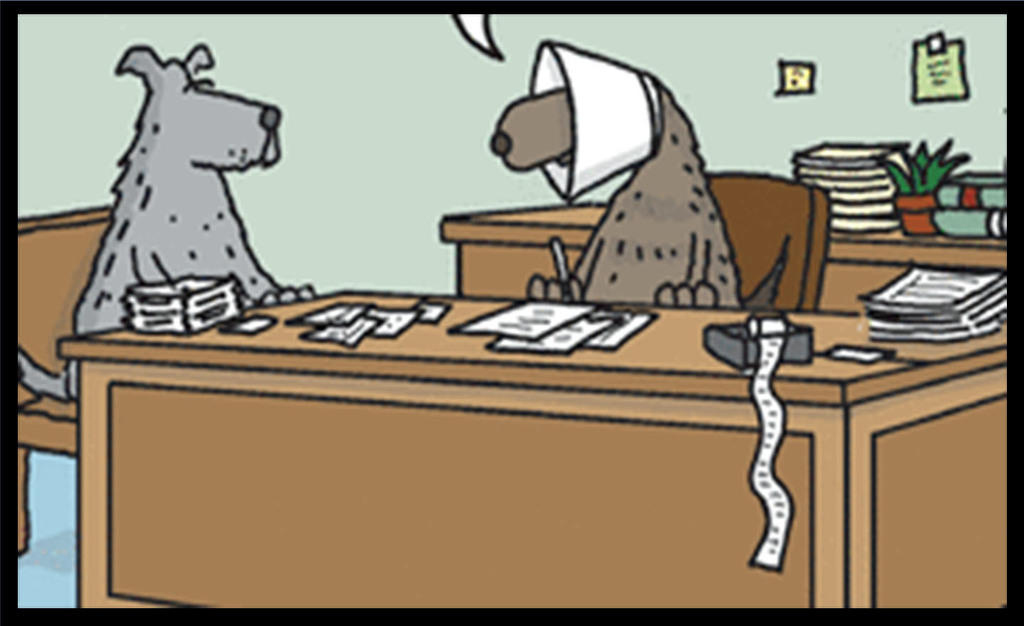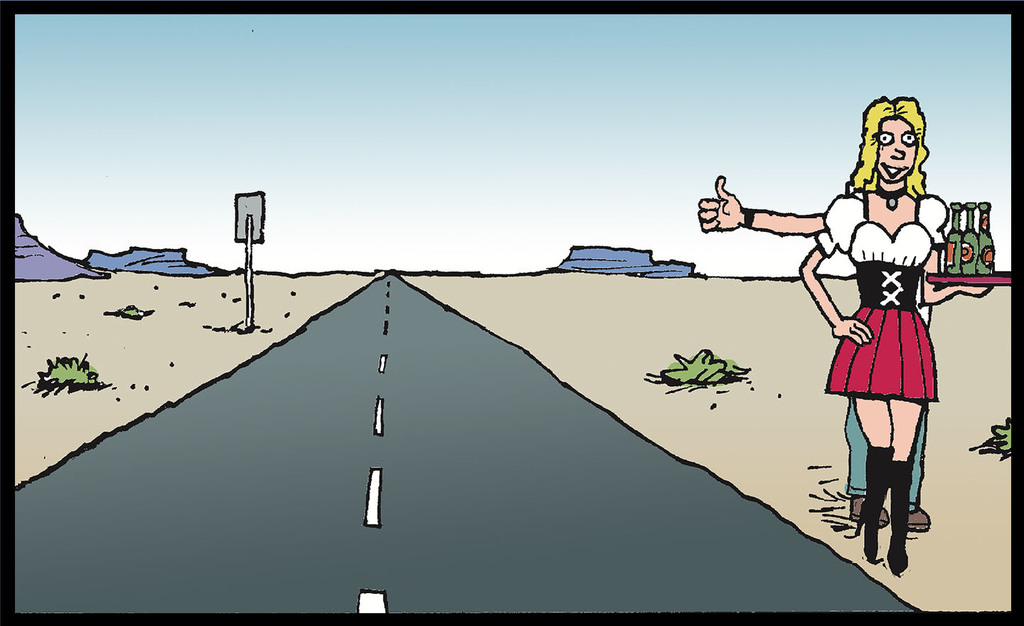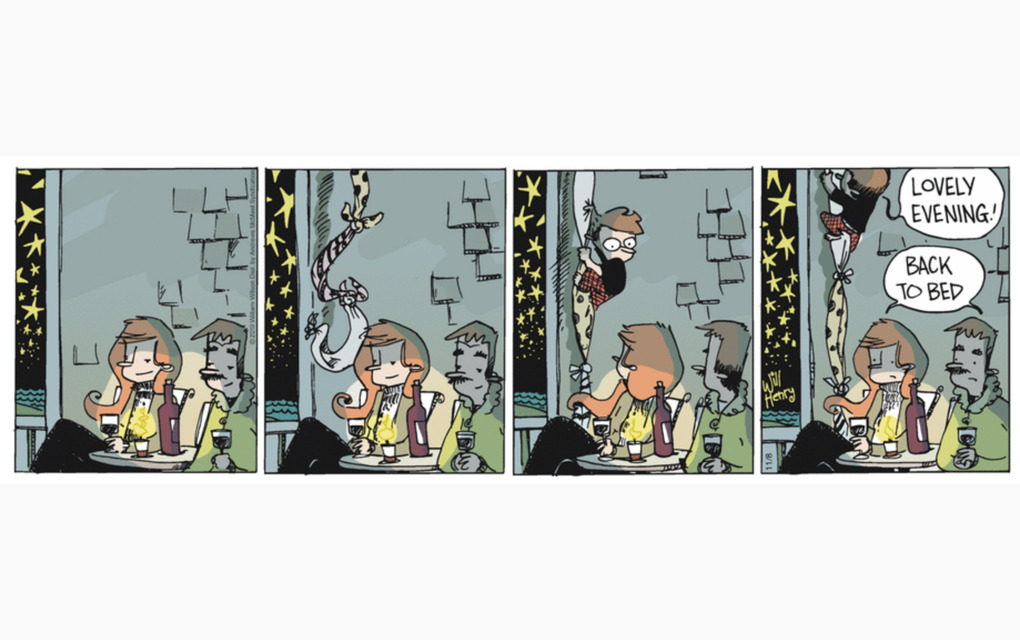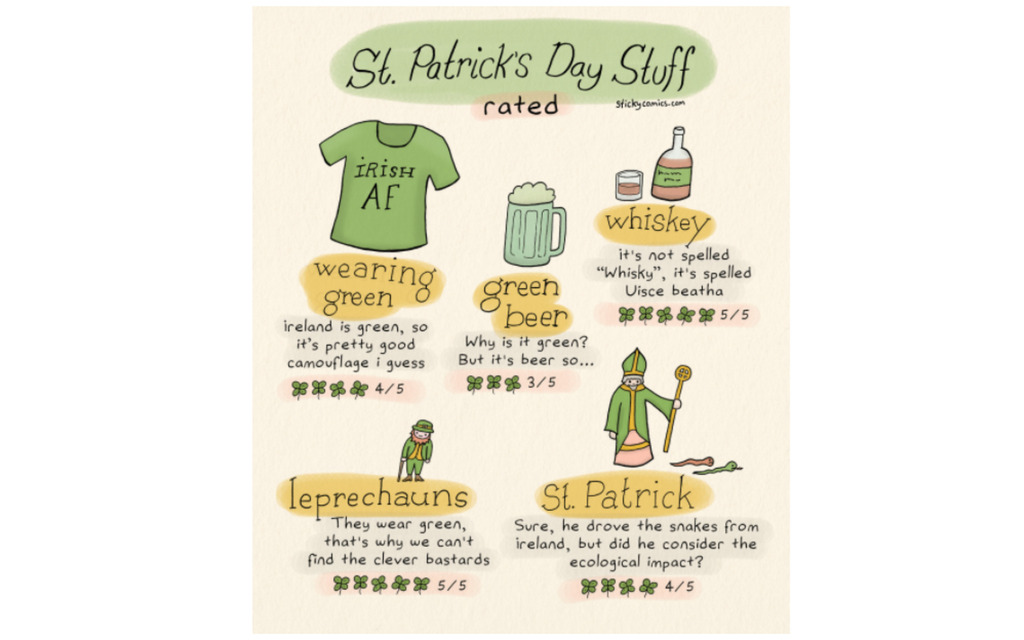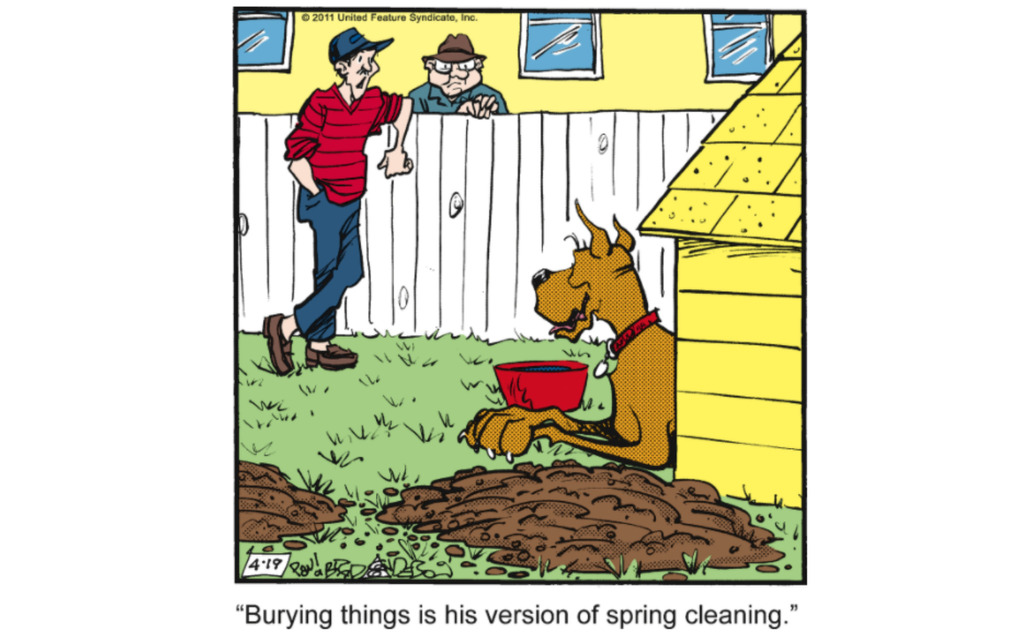Chip Sansom (The Born Loser)
by GoComicsIn honor of The Born Loser's 50th anniversary this month, we share a special "Meet Your Creator" installment from cartoonist Chip Sansom.
How and when did you begin your career as a cartoonist?
My career as a cartoonist began in 1977. My dad, Art Sansom, created The Born Loser in 1965 and by 1977, he was looking for an assistant so he could ease up his heavy workload, especially with the gag writing. I had started a career in the business world immediately after I graduated from college four years earlier, and by this time I had become disenchanted with that career path and was looking for something more creative. Sounds like a perfect match, right? Except I never dreamed I could be a cartoonist, because I believed I was a terrible artist. I think I was intimidated by the fact that both my mother and father were fabulous artists - there was no way I could live up to the high bar they had set, so I decided at an early age not to try. This is not to say they did anything to make me feel this way - it was all in my head.
Believe it or not, I never took an art class in college, high school or even junior high school. In retrospect, I think if I had taken art classes, I probably wouldn't have been all that bad and certainly would have learned many things that I would find helpful to this day. On the other hand, I was an English major in college and had loved creative writing from an early age, so I was confident I could help my dad out with the writing on the strip. I started by submitting a series of gags to him, as had multiple other professional writers. They were all talented, but they didn't know The Born Loser like I did. I grew up watching my dad create the strip in his studio in our home. I knew it so well, my gags worked better for the strip than those of the other writers. Dad offered to hire me as an apprentice and teach me the art side of things while I was writing gags for him. I accepted under the condition that I work for free on a trial basis for one year, while still working my other job. I passed the audition to the satisfaction of both of us and started my official apprenticeship one year later.
Dad taught me every aspect of producing the comic strip exactly as he did. The artwork progressed slowly but surely. I found that even though I was unable to quickly draw the characters, my eye was trained to know what they should look like and I would keep working on my drawings until they passed my eye test. By the time Dad passed away in 1991, I was able to take over the complete production of The Born Loser by myself. I still felt I wasn't a great artist, but I believed I could produce The Born Loser better than any other living person. I have made a conscious effort to continue the comic strip in the style Dad taught me. As a tribute to him, I still sign both of our names to every comic strip.
Were you a big fan of comic strips or comic books as a child? Did any have an influence on your work?
At a very young age I took to Dennis the Menace, both the newspaper panel and the comic books. I loved the humor, and the artwork always seemed just right. The newspaper panels were periodically collected in paperback book form, many of which I still have today somewhere in the basement. I remember the comic books occasionally featured giant special editions with themes like Dennis at Christmas and Dennis in Hawaii, which I looked forward to with bated breath. I thought Hank Ketcham was a genius. I also thought he was incredibly prolific, being able to do that daily strip and all those comic books. It was a great surprise to me when I learned as an adult that one of Ketcham's assistants on the newspaper panel, Al Wiseman, was responsible for the comic books. They both have my admiration now. There was a TV show of Dennis the Menace in the early 1960s, starring Jay North, as I recall. It probably was a good show in its own right, but I felt it didn't capture the essence of Dennis from the comics. I think there are elements of Dennis in The Born Loser character, Hurricane Hattie.
I was never that into action comics, like Superman and Batman, which were very popular when I was a kid. However, when I discovered Carl Barks' adventure tales in the late 1950s, I was hooked. Being raised on Walt Disney cartoons, Donald Duck was the initial lure to Barks' work, but Uncle Scrooge quickly became my favorite. Barks' artwork was fabulous and it perfectly depicted those tall tales he had such a talent for spinning - I always thought he could have been successful working in the movies. Years later, when I was watching Indiana Jones, I immediately picked up on scenes that were right out of old Uncle Scrooge comic books. Stephen Spielberg and George Lucas had to be fans - Barks made it in the movies after all. You will find tips of the hat to Uncle Scrooge in The Born Loser character, Rancid W. Veeblefester.
Describe your studio.
I work in the same home studio that Dad and I worked in together while I was apprenticing for him. It is also the same studio in which he created The Born Loser in 1965. There are some similarities to how it looked when he was using it, but other things he would not recognize. My computer setup, for example - none of that was around when Dad was alive. I have an iMac with a 27-inch screen, which is about three years old. I have Photoshop loaded on it. I use an old HP Deskjet printer and a Brother Professional Series scanner, which has a large enough bed to scan my 17-inch-wide daily strips (my Sunday pages are 22 inches wide and have to be scanned in three tiers). I do not use the computer to create my artwork. I still draw everything by hand, the old-fashioned way that my dad taught me. I make one concession to the 21st century - I use the computer to scan and send my work digitally to the syndicate. It sure beats those late-night trips to the airport to express mail my work ahead of a pressing deadline. No one is allowed to visit my studio - it is too badly in need of a makeover. It could use a new coat of paint and removal of about three garbage cans' worth of clutter. I have some artwork leaning against the walls, which I haven't got around to hanging, yet. One is a Born Loser original, which my dad did on my 16th birthday, and featured a Spirit of '76 Revolutionary War theme. He even wrote "Happy Birthday, Chip, Old Bean," inside the panel where all the readers would see it - that meant a lot to me. That strip is definitely my prized possession. There is also a framed Chris Welkin, Planeteer Sunday page from the early 1950s. That was the comic strip Dad did before creating The Born Loser. It was a sci-fi strip along the lines of Flash Gordon, which Dad drew in a very similar style to his hero, Milton Caniff. It is amazing to me that the same cartoonist was versatile enough to draw so beautifully in two such different styles as The Born Loser and Chris Welkin. He was truly an outstanding artist! Another artwork leaning against a wall is a beautiful original multimedia portrait of my mom, which my dad did for a Cleveland Garden Club program cover. Finally, there is a watercolor painting, which hung on my bedroom wall when I was a child, by Walt Scott of The Little People, his famous comic strip. In the 1950s, Walt worked with my dad at the Cleveland-based headquarters of Newspaper Enterprise Association. Before that, he worked for Walt Disney on several famous animated movies, including Fantasia. Among the less-treasured items in my studio is a very old 15-inch Toshiba TV, which I have been meaning to replace for many years, but haven't gotten around to. It does seem kind of silly to channel a digital cable signal through an ancient TV. I also have an elaborate Denon audio component system with Infinity speakers, which I haven't used for years because playing music through my computer is so much more convenient. I still keep about 500 of my favorite CDs in racks along one studio wall. On several other walls, I have bookshelves with a couple hundred of my favorite books. There are other obsolete items in my studio, like my overhead projector, which I used to use to enlarge or shrink artwork. Now, I can do that much more easily using the computer. One of these days, I'll get around to removing the overhead projector. I guess I haven't changed things in the studio because I am comfortably surrounded by the things I love, as well as the echoes of great memories from my past.
Do you listen to music or watch TV while you are working?
Not as much as I used to; I often prefer quiet these days - it isn't distracting. I used to regularly listen to rock "÷n' roll while I worked, but I only do so once in a while (and more quietly) now. I am most partial to the soundtrack of my youth - '60s music, particularly The Beatles. I find classical music is soothing when I need to relax. Anything on TV with action that has to be watched or with a complex storyline that has to be followed closely will not work. Sports play-by-play is perfect to listen to while I am working. I am a major fan and I always try to catch games with my hometown teams, the Indians, Browns and Cavaliers (no Born Loser jokes, please). Sometimes TV talk shows, like David Letterman or Jimmy Fallon are OK to have on in the background, because those shows can be listened to without having to watch or follow closely. I remember lying in bed as a kid and hearing Dad's TV coming from his studio with shows like Steve Allen, which was the forerunner of Letterman and Fallon. His favorite TV shows were the great triumvirate of late '50s/early '60s comedies: The Honeymooners, The Andy Griffith Show (during the Don Knotts period) and The Dick Van Dyke Show. I loved watching those shows with him and will still turn on the reruns when I am in my studio - I know them by heart, so they don't require much of my attention. Looking back, I can see where those shows influenced Dad's depiction of Brutus Thornapple - especially The Honeymooners.
What are your tools of the trade?
My dad's old wooden drafting table had to be retired when its wobble became too great to compensate for. I now draw on a large Alvin drafting table with a white laminated surface. I have it adjusted to an angle that is not so great that everything I place on it tends to roll off. I have two combination incandescent bulb/florescent bulb lights mounted on the back edge of the drawing board. I keep my supplies in a four-drawer cart to the side of the drawing board. In the drawers, I keep my pencils, pens, erasers, razor blades, triangles, templates and curves. The cart has a couple of vertical slots along the side for T-squares and rulers. I use a large 36-inch Fairgate aluminum T-square. Many of the supplies I learned to use with my father have regrettably been discontinued. My dad used three-ply Coquille board with a coarse finish, but since that is no longer produced, I use three-ply Strathmore Series 500 paper with the vellum surface. I wish that the surface had more grain to it, but it is the closest I have been able to find to the old Coquille board. I draw The Born Loser in a very large-size format, for no other reason than that is how Dad worked. I cut my board for the dailies 17-inch wide x 5 М_-inches high and the Sundays are 22-inches wide x 15 М_-inches high. The actual image area for the dailies is 16-inches wide by 4 М_-inches high, which leaves a М_-inch border all around. The dailies are usually three panels, which are each 5-inches wide by 4 М_-inches high, with М_-inch gutters between the panels. Every once in a while, I will use a four-panel daily, which has four 4-inch wide panels with no gutters. My Sunday pages are divided into nine panels - three rows of three 6 М_-inch wide x 4 М_-inch high panels with a М_-inch border all around and a М_-inch space between panels. The first panel is for the Born Loser logo, which is the famous Born Loser crest that my dad created back in 1965. The second panel is the start of the gag, the third panel is referred to as a throwaway panel, because most newspapers (and the gocomics.com website) do not use it, and the rest of the gag is told in panels 4 through 9. Some newspapers do not use the logo panel and print panels 2, 4, 5, 6, 7, 8 and 9. Others do not use the top three panels at all. As a result, I have to create my Sunday pages so that the gag works in all formats: all 9 panels, 8 panels (omitting the third panel), 7 panels (omitting the logo and third panel), or 6 panels (omitting the first three panels). It is quite a challenge! Dad used Sanford Design pencils, but I have had to switch to Prismacolor Turquoise pencils. They are the only company that I have found that still offers a 9H pencil, which I regularly use for transferring images from tracing paper, a technique Dad taught me. When he needed multiple images of the same scene, he would draw it on tracing paper once, then transfer that image to as many panels as he needed. It was a nice time-saver from having to redraw the image from scratch in each panel. The other nice thing about drawing images on tracing paper is that when you flip the image over and look at the other side, you often will notice symmetrical problems that were not apparent when looking at the first side. Dad said the old-time cartoonists would hold their drawings up to mirrors for the same reason. It is easy to fix any problems on the reverse side before transferring the image. I use Strathmore tracing paper in 19 x 24-inch pads, which I cut down to the size of my panels. For drawing on my art board and lettering, I use the Turquoise F, HB and 2B pencils, depending on the boldness of the line I want. I draw and letter each panel fully before I begin inking. I do my lettering in quarter-inch height, with a 3/16-inch space between lines. In the early days, Dad would use brushes and India ink on his work, rather than nibs. For consistent lines, he would put ink on the brushes and form the tips into various points, then allow them to harden before dipping them in his ink well to work on the strip. Sometimes, he would even use a razor blade to precisely cut the hardened tips into very precise points. I don't know how unique this hardened-brush tip technique was, but I have never heard of anyone else using it. In the late '60s, when on a vacation and unable to find an art store to get brushes and ink when he ran out, he discovered that the new felt-tip pens were a versatile and convenient substitute. He was so happy with them, he soon was using them exclusively. Since he passed away, I have been told by multiple cartoonists that he was an influential pioneer in the use of these pens. Alas, his old felt-tip pen brand went out of business and the current felt-tips don't measure up. So, I use artist pens in various tip sizes to ink my work. I keep experimenting with different brands because the tips are either too hard or too soft. I am currently using Faber-Castell Pitt Pens with their Fine nib for most of my line drawings and lettering. I also use their Superfine, medium and bullet nib pens for a variety of line sizes. To fill in blacks and for bold, loose lines, I use their brush nib pens. I have recently been trying Sakura's new Pigma Sensei Manga drawing pens. Their tips are slightly different than the Faber-Castell pens, which is intriguing, but they only seem to be sold in sets, which is impractical for the quantities I need of certain tips. Oh, and I can't forget Wite-Out and Liquid Paper - they are lifesavers! Sometimes, on bad days, I swear I use more Wite-Out than ink!
What is your process for working on the strip? What do you do to fuel creativity?
I usually take care of my errands and appointments in the mornings, then begin drawing in the afternoon and work into the evening, after a break for dinner. I have been a night owl for as long as I can remember. If I have a pending deadline, I will often work late into the night until I am finished. I quickly learned that I can't sit down at the drawing board at a certain time and say "now it's time for me to be funny." The best way to write is to have it in the back of my mind 24/7. When I encounter a situation, I will find myself analyzing what would it be like if this happened to Brutus. A situation that is not funny at all can become a gag if I insert Brutus and slightly change the setup. Although I don't consider The Born Loser to be topical humor, I will often stimulate ideas by reading the newspaper or a magazine article. As I go through my day, I will write down these seeds of ideas. Then, when I get back to the drawing board, I will try to make gags out of them. If a gag presents itself, I will write it on an index card and put it in one of many files I keep, which are separated by subject matter and readiness for the strip. When it is time to lay out my strips for the week, I will go through those files and pull out the seven best ones. Some of those index cards sit in the files for months or even years. I will periodically look through the old files and revisit the ideas. Sometimes, a new twist will pop in my head that makes the old gag usable. My biggest nightmare is thinking of an idea when I am not at my drawing board with a pencil and paper in hand, for example, when I am driving, then by the time I get someplace where I can jot it down, I can't remember it. It is a horrible feeling, especially when you are in need of a good idea. I am convinced many of the best gags ever written have been forgotten forever. I learned to always carry a notebook and pencil with me wherever I went, so I would be able to jot down ideas that came to me in a restaurant or on the golf course. I even kept one on my nightstand, for those not-infrequent times when an idea would come to me in my sleep. In another instance of taking advantage of modern technology, I have now replaced the notebook and pencil with my iPhone. When I think of an idea, I will record it with the voice memo app.
What are you most proud of?
I am most proud that I have been able to carry on the legacy my dad created 50 years ago, continuing to entertain readers old and new. To be successful for this long, we must be doing something right! It is a tribute to the great characters and universal premise Dad created and was able to pass along to me. It is still a thrill to open the morning paper and see our work. And an even bigger thrill to think of all the readers around the world who are turning to The Born Loser for a smile to start their days.




